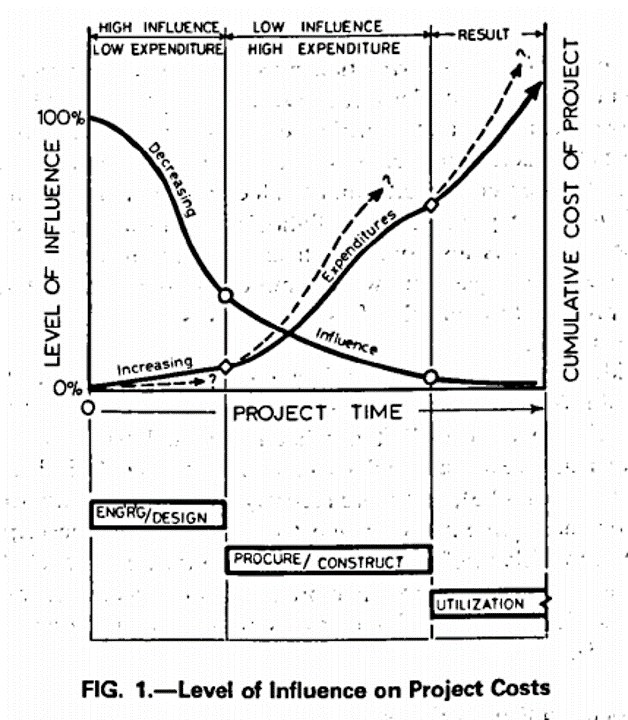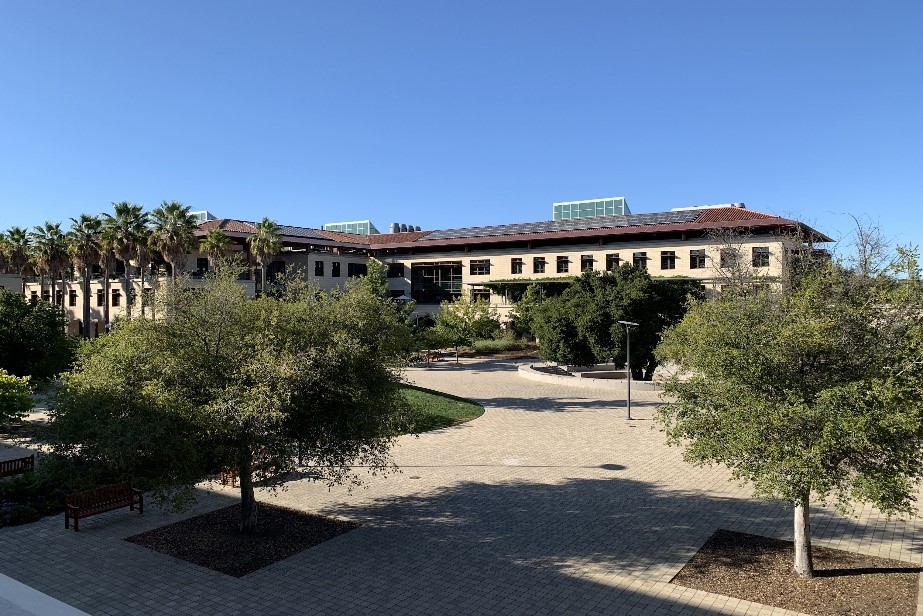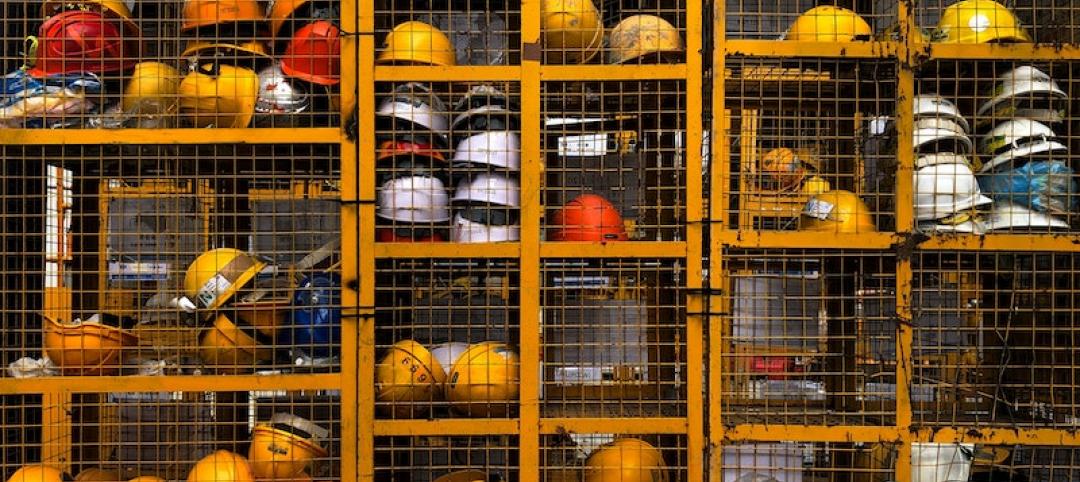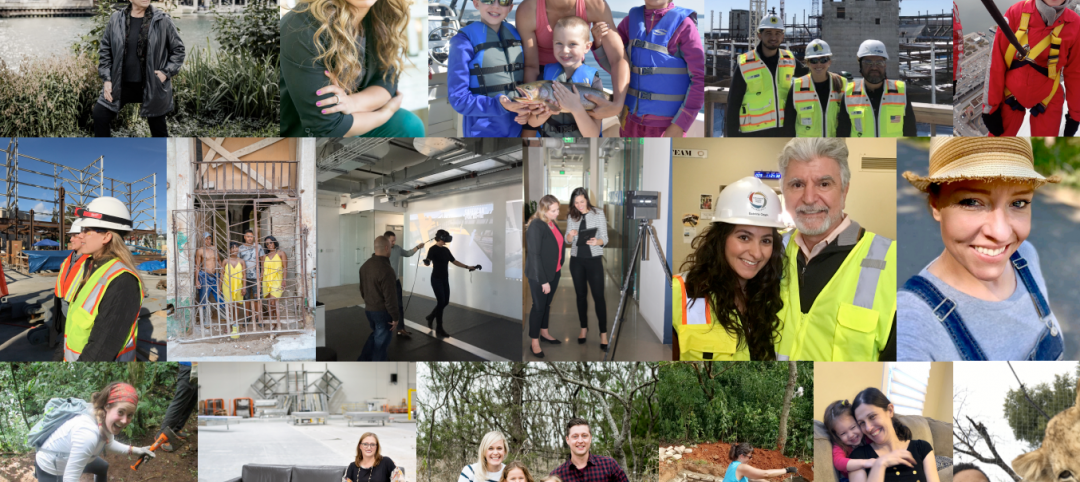How do we go back to the beginning of an idea? We follow its influence in reverse—like a tree we can see the size by how far the newest parts have reached, and follow the branches back to the center, the trunk, where it all began and, crucially, continues to emanate.
Such a tree grows at Stanford, at the Center for Integrated Facilities Engineering (CIFE). Here we can trace the beginnings of many ideas, now considered as fundamental knowledge across the industry: the insights about industry productivity decline, Integrated Project Delivery (IPD), and the very concept of Virtual Design and Construction, among others.
In fact, many of these concepts are now so widespread that their origin has become obscured or overwritten—companies like McKinsey continue to claim credit for uncovering construction’s productivity problem despite the evidence to the contrary. CIFE pushes the boundaries of what is possible in the construction industry through a focus on open research, groundbreaking ideas, and the technological processes that drive those ideas. In the words of CIFE Director, Martin Fischer, “We challenge the industry and the industry challenges us.”
Growth of CIFE at Stanford University
 CIFE was founded on January 1, 1988, with the mission of expanding the horizons of design and articulating more explicitly what a great project could be. Today, it is the premier academic research center for virtual design and construction (VDC) in the AECO industry.
CIFE was founded on January 1, 1988, with the mission of expanding the horizons of design and articulating more explicitly what a great project could be. Today, it is the premier academic research center for virtual design and construction (VDC) in the AECO industry.
The Original Level of Influence Curve by Boyd Paulson, 1976. Which later formed the foundation for HOK’s MacLeamy Curve in 2004. All in favor of renaming this the Paulson Curve? Photo: Paulson.
At its core, the goal of CIFE is to leverage integration and digitization to improve how we organize, conceptualize, and execute design and construction. The seeds of this idea reach back to 1976 and a paper by Stanford Professor Boyd Paulson, entitled “Designing to Reduce Construction Costs.” In this paper, Paulson identifies a structural problem in the industry: in early phases, when the projects costs are still low, decisions are made that have extraordinary effects on the final cost of the project, yet traditionally, little attention is paid to such implications during this time. It is therefore critical, as Paulson puts it, to “assure that construction and... operations thinking is strongly injected in the conceptual, preliminary, and detail design processes.”
The concept of shifting effort from one end of the project design cycle to the other—that is, integrating various disciplines at the earliest possible stage—is the core principle of what would become integrated project delivery (IPD) as the strategy for creating better projects and VDC as the method for executing the strategy. In fact, Paulson’s diagram of intersecting cost and influence curves is frequently seen in IPD and VDC presentations—but under a different name. It is usually called the MacLeamy curve, after Patrick MacLeamy of HOK, and first surfaced around 2004, some 28 years after Paulson’s curve was published. As we will continue to see, in the past and now in the future, Stanford was first.
CIFE Yesterday & Today
CIFE has led and continues to lead the industry through groundbreaking technological development and conceptual research that identifies where the industry is headed. Among the first to recognize that the “I” in BIM—information—was underutilized as an analytic tool and a source of learning, CIFE developed the first BIM prototype and BIM-based analysis models in 1988.
True to their goal of industry collaboration, CIFE has formed partnerships with like-minded third parties to mutual benefit. This industry academic collaboration is where the magic happens and how the industry moves forward. For example, together with Mortenson, CIFE pioneered the use of 4D BIM and the use of time as a design variable in 1998. Using a live project—the Walt Disney Concert Hall in Los Angeles—for the first time, CIFE and Mortenson were able to simulate design, procurement, construction and constructability, and organizational tradeoffs required to realize such a complex project.
So, what made Mortenson jump in headfirst as a pioneer in 4D BIM? Derek Cunz, Senior Vice President of Mortenson says, “Necessity breads innovation.” This new workflow was simply what was required to build a project of this complexity. This proof-of-concept led directly to the commercialization of 4D BIM.
 The project team at the Walt Disney Concert Hal pioneered the industry’s first use of 4D BIM. Photo: Mortenson Construction.
The project team at the Walt Disney Concert Hal pioneered the industry’s first use of 4D BIM. Photo: Mortenson Construction.
When Rene Morkos came to CIFE with the idea to use AI to optimize construction schedules, CIFE helped get him to the forefront of what was known and building upon important foundational research by people like Florian Aalami. Martin put Rene on a plane to Amsterdam, where he observed the problem of space underutilization on construction sites and pockets of work being done slowly or not at all. This was the problem he wanted to solve—the digital world needs to communicate with what happens on site.
When Rene reflects on what CIFE has done that promotes the creation of such industry changing ideas he believes that “freedom to explore” is at the heart of it. Rene says “CIFE does not tell students what to research. Instead it grants them the freedom of exploration until they find a topic, they are passionate about.”
CIFE helped him develop the process models that would eventually become ALICE—a powerful AI engine, built on BIM, used to optimize the way we build. These examples, along with others, show the value of CIFE’s commitment to integration and digitalization, of collaboration across disciplines from an early stage. By using BIM to coordinate this integration and provide a common source of truth for all collaborators, CIFE turned it from an information modeling tool to an information management one. We now understand this as the core principle of VDC, a term coined by CIFE in 2002.
 ALICE gives project teams the ability to explore different construction strategies resulting in a better understanding of key risks and more effective use of expensive resources like labor and heavy equipment. Photo: ALICE Technologies.
ALICE gives project teams the ability to explore different construction strategies resulting in a better understanding of key risks and more effective use of expensive resources like labor and heavy equipment. Photo: ALICE Technologies.
The Industry (Slowly) Catches Up
Movements inside and outside the construction industry are responding to the work of CIFE. Exponential development in computational speed and advancements in 3D/4D/5D software are coming to fruition in part because of the groundwork laid by CIFE to prove their viability. More and more the industry is considering the purpose of a project in tandem with the process—that is, the industry is letting go of design tools as blunt instruments of documentation and embracing the concept of digital integration, treating both the project itself and the tools used to create it as optimizable problems.
But the industry still has limiters in place. According to Derek Cunz of Mortenson, the investment in innovative business development has yet to be matched by investment in innovative execution methods because “there’s not a punishment for lack of innovation...no one sees the downside, yet.” There is no disincentive—regardless of the number of contracts awarded, those winning the work are not seeing the economic benefit of changing how they deliver that project. Compounding this, the length of traditional project delivery means that incremental change comes slowly, irrespective of any innovative practices. In short, the industry must be more open to change, more willing to ask broader challenging questions about the way things are done.
CIFE and the Future: The Next Branch
Today CIFE is working on new tools that will one day reach the status of the above, such as Stanford’s Building Parser, the automated scan-to-BIM R&D effort by PhD candidate Iro Armeni. Using non-invasive techniques like laser scanning and photography together with machine learning, Armeni aims to create a digital model of an existing building that automatically converts whole-building point clouds into semantic BIM assets.
When understanding Iro’s reasoning for this development, “Sometimes we are looking for solutions and we are not open to first ask the question do we need to think a bit broadly and find something that is a better fit to solving that part.” This technique can one day help us better understand existing conditions in future projects and even speed the digitization of whole developments or cities.
 Building Parser (buildingparser.stanford.edu) is an AI method that performs hierarchical parsing of whole-building 3D point clouds into semantic components (rooms and containing objects) - output is a 3D model of the input space. Left: Raw point cloud. Middle: Results of parsing the point cloud into rooms (i.e. the floor plan). Right: Results of parsing a detected room (marked with the black circle) into objects. Photo: Iro Armeni
Building Parser (buildingparser.stanford.edu) is an AI method that performs hierarchical parsing of whole-building 3D point clouds into semantic components (rooms and containing objects) - output is a 3D model of the input space. Left: Raw point cloud. Middle: Results of parsing the point cloud into rooms (i.e. the floor plan). Right: Results of parsing a detected room (marked with the black circle) into objects. Photo: Iro Armeni
CIFE’s research shaped the history of digital construction technology—and what they are working on now will surely shape its future. Through each iteration, from the development of CAD software to the expansion of BIM into 4D integration, CIFE has expanded the boundaries of what portions of the building process can be digitized. First it was CAD software and documentation with building themselves, then came the digitization of the design process that enabled even larger and more complex projects.
The next step is the city—what can CIFE learn when it extends its branches to the urban scale, to the level of community and beyond? The conversion of entire cities into analyzable digital assets may be just the beginning. Ben Schwegler, Chief Scientist of Engie China Lab and longtime CIFE member says, “The next big thing CIFE is working on is community. Imagine all of these practices at an urban scale—I have been one of the biggest advocates for that—this is going to be an enormous game changer.” But no matter what new concepts and technologies come to be, whatever new leaves grow at the fringes of what is possible, we can be sure they will be borne on the branches of Stanford CIFE and its partners.
About the Author
Danielle Dy Buncio is the Co-Founder and CEO of VIATechnik. Prior to VIATechnik Danielle managed large-scale building and infrastructure projects in Silicon Valley, Chicago, and Sydney. Danielle also serves on the Board of Directors of Ryan Companies US, a $2B real estate development, construction, and design firm and JF Brennan, a 100-year-old heavy civil and marine contractor. Danielle is a 2018 Building Design+Construction 40 under 40 honoree and a 2019 ENR National Top 20 under 40. Danielle and her Co-Founder Anton Dy Buncio are both Stanford grads. Through collaboration with Stanford CIFE and the Stanford Real Estate Council, VIATechnik is able to stay at the forefront of research to advance the AECO industry.
About VIATechnik
VIATechnik is the global leader in virtual design and construction, with nearly 200 digital experts in nine global offices. We are on a mission to transform the analog world of design and construction into a digital platform, enabling efficient design, industrialized construction, and a digital real estate service model. Through this transformation, we believe we can solve the world’s housing and infrastructure challenges, deliver spaces that nurture life, commerce, and relationships. VIATechnik has recently formed a partnership with Stanford CIFE to co-deliver the VDC Certificate Course.
More from Author
VIATechnik | Jul 17, 2023
Unlocking the power of digital twins: Maximizing success with OKRs
To effectively capitalize on digital twin technology, owners can align their efforts using objectives and key results (OKRs).
VIATechnik | Apr 19, 2022
VDC maturity and the key to driving better, more predictable outcomes
While more stakeholders across the AEC value chain embrace the concept of virtual design and construction, what is driving the vastly different results that organizations achieve? The answer lies within an assessment of VDC maturity.
VIATechnik | Sep 28, 2021
Getting diversity, equity, and inclusion going in AEC firms
As a professional services organization built on attracting the best and brightest talent, VIATechnik relies on finding new ways to do just that. Here are some tips that we’ve learned through our diversity, equity, and inclusion (DE&I) journey.
VIATechnik | Mar 2, 2021
Retail expectations vs reality in 2021
The reality of retail success in 2021 is proving to be based on a formula of mixing digital with the physical in pursuit of convenience.
VIATechnik | Nov 23, 2020
Agility is the game-changer in the post-COVID world
There has been a fundamental shift in how human beings live, work, and play. The built environment must shift in response.
VIATechnik | Nov 17, 2020
The coming automation of retail brick and mortar
The demise of retail brick and mortar is overstated and unwarranted - we see digital transformation offering brick and mortar a path forward for the physical store.
VIATechnik | Oct 1, 2020
Smart buildings stand on good data
The coming disruption of owning and operating a building and how to stay ahead through BIM.
VIATechnik | Jul 15, 2020
Building pride: A Reflection of LGBTQ rights in construction
The Supreme Court did its job. The rest is up to us.
VIATechnik | May 8, 2020
Data centers as a service: The next big opportunity for design teams
As data centers compete to process more data with lower latency, the AEC industry is ideally positioned to develop design standards that ensure long-term flexibility.
VIATechnik | Mar 5, 2020
These 17 women are changing the face of construction
During this Women in Construction Week, we shine a spotlight on 17 female leaders in design, construction, and real estate to spur an important conversation of diversity, inclusion, and empowerment.















